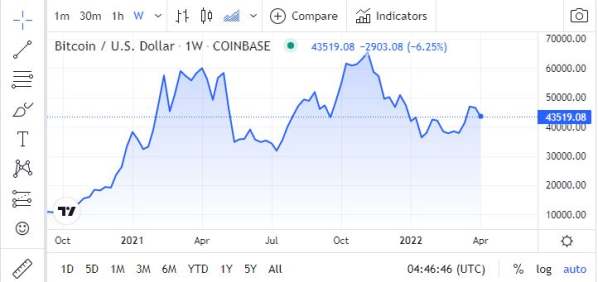
<WikiFX Malaysia Original: Editor – Fion>
The FOMC meeting minutes released on 7th April at UTC +8 2.00 am finally provided the long-awaited details on its balance-sheet cut.

The Fed has agreed to reduce the central banks asset holdings by up to $95 billion per month, which is significantly larger than its reduction program in 2018. The Fed attempts to tighten the monetary policy and economy credit to combat the highest inflation rate in 40 years as the Russia-Ukraine war tempered its first 0.25% interest rate hike announced in mid-March. The FOMC minutes also addressed the upcoming plans on the scope and pace of the balance reduction, which will be phased in over 3 months or slightly longer starting as soon as May.

Out of the $95 billion that is expected to be shrunken off the balance sheet by the Fed, $35 billion is going to be from mortgage-backed securities (MBS) whereas another $60 billion of that is going to be based off the treasury bonds. In addition, the policymakers of the Committee are also taking a more aggressive approach to fight against inflation as they indicated that the interest rates could be increased by half-percentage point instead of a quarter percent.
The vicious inflationary environment, coupled with the Federal Reserve's initiation of the interest rate hike cycle, pushed up the U.S. bond yield. The 10-year bond yield, which represents a risk-free interest rate indicator, rose from 1.83% at the end of February to 2.54% on April 5. Consequently, causing a sharp downward correction in the U.S. stock market, especially in technology stocks.
Non-farm payrolls (NFP) reported 431,000 in March – though slightly lower than expected but is satisfying. In February, the figure increased by 72,000 to 750,000 from the 678,000 announced in the previous month. Moreover, the unemployment rate fell to 3.6% in March from 3.8% in February. The total number of new non-agricultural workers in the past 23 months was 20,463,000, 91.5% of the 22,362,000 reductions in March and April 2020, reaching the pre-outbreak level of employment. In summary, these recent general economic indicators in the United States show that the employment market is still in a good state of recovery, supporting the overall consumer market for the time being.

However, the University of Michigan's Consumer Confidence Index is at its lowest point since September 2011, indicating that the average adult American is becoming increasingly cautious and conservative about making future purchases of durable goods.
With the Consumer Price Index remaining high, it is feared that lower real disposable income will eventually be reflected in weakening consumer power, and the continuing signs of weakness in the ISM Purchasing Managers' Index should be a cause for concern and caution. It is worth following up closely to see whether the real disposable income of people with high employment levels will be eroded, leading to a weakening of the overall consumer market, which will eventually backfire on the job market.
<WikiFX Malaysia Original: Editor – Fion>


